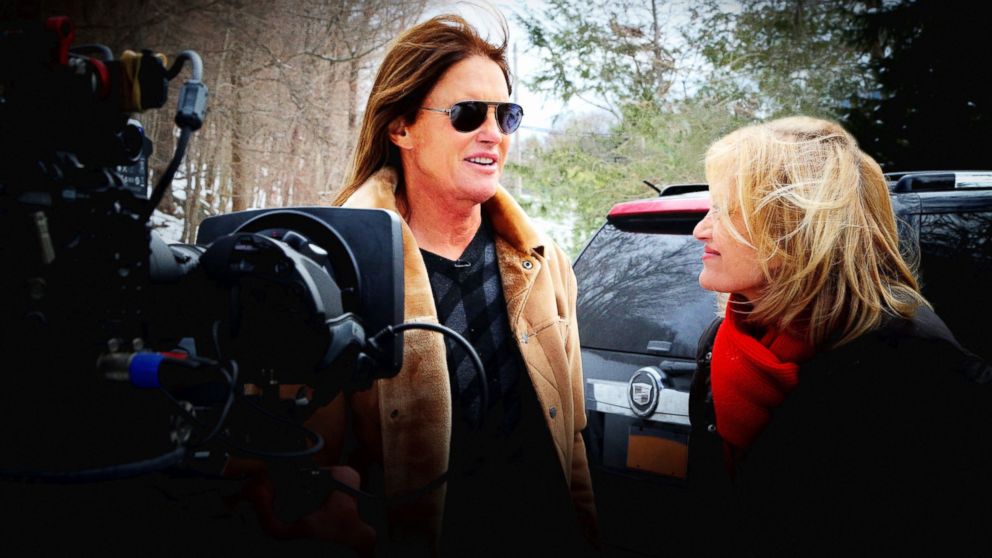Gender Identity Versus Attraction: 'It's Apples and Oranges' Says Bruce Jenner
— -- When Brandon Jenner, Bruce Jenner’s son, learned his dad is transgender, his “biggest question,” he tells ABC News, was who his father might want to be in a relationship with in the future.
“I feel like in life we’re all looking for love and so many things are done in the world just to try to gain love, you know,” Brandon says, turning to his dad. “From here on out. ... I wonder how your—what your desires are in that regard. If you’re looking forward to meeting somebody."
When people come out as transgender -- especially if they choose to transition medically -- one of the most common questions they face is how it affects whom they are attracted to and whom they love. The fact is—for many transgender people—it simply doesn’t.
As Bruce Jenner tells Diane Sawyer, “It’s apples and oranges.”
“Never Been With a Guy”
Jenner tells ABC that when it comes to attraction, “No, I’m not gay. I am not gay. I am, as far as I know -- heterosexual.”
“I’ve never been with a guy -- I’ve always been married, raising kids, doing all that kind of stuff.” Jenner adds. "There’s two different things here. Sexuality is who you personally are attracted to—who turns you on— male or female. But gender identity has to do with who you are as a person and your soul, and who you identify with inside, okay?"
Endocrinologist Dr. Norman Spack, the co-director of a special gender management clinic at Boston Children's Hospital and an Associate Clinical Professor of Pediatrics at Harvard Medical School, says that at first—years ago—even he needed a lesson. “I was confused about, does this make so-and-so gay? Does this make so-and-so straight?” Spack says.
But after treating 200 transgender adults, Spack still recites a lesson he learned early on from a member of the community.
"Sexual orientation is who you go to bed with,” Spack tells ABC News, “but gender identity is who you go to bed as.”
“A Human Experience”
Jennifer Boylan, a transgender woman and author of She's Not There: a Life in Two Genders, is a parent to two boys and a professor at Barnard in New York. Boylan remained married to her wife, Deirdre, through her transition. They have been together since 1988, when Boylan was living as a man. They are together still.
Boylan understands that some people may be confused.
“It is a human experience,” Boylan tells Diane Sawyer. "To address this issue, as Bruce Jenner is addressing this now, takes courage. It takes honesty. And it takes the support of people around you who will treat you with love rather than disdain.”
“My sense of myself as female was something that never left me,” Boylan adds, “But I was always attracted to women. My general experience is that whoever you were attracted to before remains who you're attracted to after.”
“There are no hard and fast rules. The important thing to understand is that sexuality, who you love, and gender identity, who you are, those really are different things.”
Nick Adams, who works for GLAAD and is also transgender, urges everyone to remember that sexual orientation isn’t about sex, "It’s about who you love—who you want to fall in love with." Adams, who transitioned in his early thirties, was oriented towards men even before transitioning to male himself. Today, he has been with his partner John since 2001. "I am a gay man," Adams says.
Jay Brown, of the Human Rights Campaign -- a transgender man who identifies as straight, may have been labeled a lesbian before his transition.
“Take me,” Brown says, “I'm a transgender man married to a woman. My gender identity is male and my sexual orientation is straight. Transgender people can be gay, lesbian, bisexual or straight. We're dads and moms, brothers and sisters, sons and daughters. We're your co-workers, and your neighbors. We're 7-year-old children and 70-year-old grandparents. We're a diverse community, representing all racial and ethnic backgrounds, as well as faith backgrounds.”
“A Poverty of Our Language”
As Andrew Solomon writes in his book Far from The Tree, “It is a poverty of our language that we use the word sex to refer both to gender and to carnal acts.” In other words–your sex (whether you are male or female)—has nothing to do with, well, sex (as in—sex acts).
Dr. Spack says he has been “delighted” to see partners of all genders stand by and support his transgender patients. “I tried to play a game,” Spack says, “I'd try to guess whether a patient’s partner was male, female, or what. I never ask leading questions that would give it away. I could never guess whether -- in their affirmed gender—they would be gay, straight, or bi. One thing has absolutely nothing to do with the other. And the data shows it.”
“Every person is different, every experience is different,” adds psychiatrist Dr. Stephen B. Levine, “Everyone is a mosaic.”
So how do we know someone’s gender identity? Their orientation? The answer is we can’t—at least not until they choose to share it.




